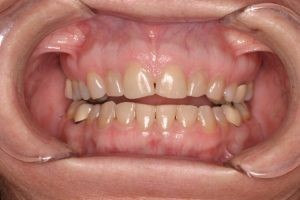The Awakening Truths about Sleep Apnea
What is Sleep Apnea and how do I know if I have it?
Those are great questions that here at McCreight Progressive Dentistry we hear all the time. Let’s start with the meaning of the word Apnea as that will help us understand this article effortlessly. Apnea comes from the Greek word Apnoia which literally translates to “without breath” therefore, Sleep Apnea means Sleep without breath. Scary sounding, huh? I thought so too! Sleep Apnea can stop you from breathing in severe cases hundreds of times per night. When this happens your blood oxygen levels drop beyond the normal threshold. This drop causes your body to enter a fight or flight response usually at which point you gasp and wake up. Many individuals however are unaware that they have this problem until it is pointed out by a loved one. Usually the person not sleeping next to you- slapping or kicking you for waking them from their beauty rest with your snoring or gasping.
There are three different types of Sleep Apnea; Central Apnea which is caused by the brain failing to activate the muscles of breathing during your sleep. Obstructive Sleep Apnea; which is caused by the collapse of the airway during sleep. There is also a combination of the two which is called Mixed Apnea. The focus of this article will be on Obstructive Sleep Apnea as it relates to dentistry but more importantly how it relates directly to you or a loved one.
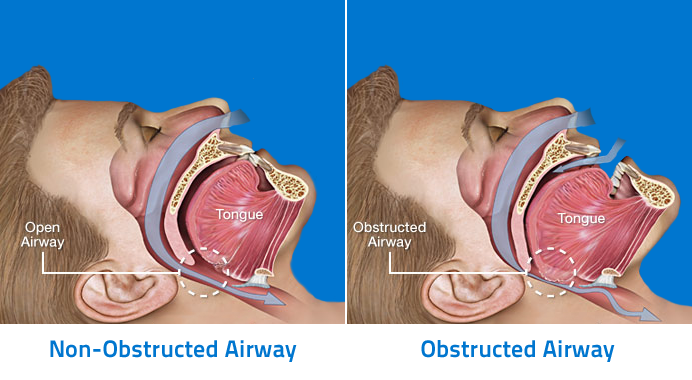
What Causes Obstructive Sleep Apnea?
Obstructive Sleep Apnea is caused by the soft tissues and muscles in the mouth obstructing the airway. Pause! What does that mean? It means that the tongue and surrounding tissues collapse to the back of the throat, blocking the airway which in return severely reduces oxygen intake.
It is important to understand that Obstructive Sleep Apnea can affect everyone, including children. However there are several risk factors that increase your chance of developing Sleep Apnea. One of the main risk factors is being overweight or obese as weight gain affects all tissues including those in the neck. A thicker neck has excess fat deposits as well as more tissue in the back of the throat. These tissues can fall down over the airway blocking the flow of oxygen into the lungs. Not everyone who is obese has a larger neck circumference just as not everyone who is thin has a smaller neck circumference. With this being said, The Mayo Clinic states that, “For men, the risk increases if neck circumference is 17 inches and larger. In women, the risk increases if neck circumference is 15 inches and larger.” The tissues in the neck just like other muscle tissue within our body regardless of the size will start to sag and lose definition as we age. This aging process narrows the throat and in return restricts the airway to the lungs.

Other risk factors that increase your likelihood of developing Obstructive Sleep Apnea include some elective factors. These factors involve the use of alcohol, sedatives, and opioids, as these substances relax the muscles in the throat. In addition to relaxing the muscles in the throat these substances can also decrease your drive to breath making the breath shorter and shallow. Smokers are also three times more likely to develop Sleep Apnea due to the increase amount of inflammation and fluid retention in the upper airway. To maximize your response to therapy it is best to avoid such substances, however if you are going to have a drink we suggest that you enjoy it hours before your head meets the pillow for the night.
Complications Associated with Sleep Apnea
Studies have shown that even one hour of occasional sleep deprivation has impacts on your performance which may leave you with daytime fatigue or drowsiness. You will experience difficulties concentrating, find yourself falling asleep while at work or worse while driving, and may notice irritability as a result. Chronic sleep deprivation however differs in the sense that this is happening every night which wreaks havoc on the body. It has been proven that sleep deprivation can cause Type 2 Diabetes, Heart Disease, High Blood Pressure and Depression. Children and adolescents with Sleep Apnea may do poorly in school, have behavioral problems and will also find it hard to concentrate during regular activities.
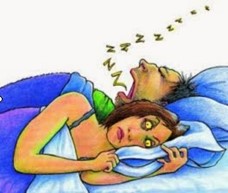
Beyond the mental and physical effects of Sleep Apnea you could also be putting your marriage or relationship at risk. Most couples who deal with this problem have unofficially named the couch as a second master suite. The constant tossing and turning, hitting and kicking as well as the countless thoughts of shoving a sock in our loved ones mouth is not something we signed up for. As a result our sex life takes a dramatic hit, not only from sleeping in separate rooms but also because studies show that both men and women dealing with Sleep Apnea have significantly higher rates of sexual dysfunction. This is a real problem! Recently it was estimated that snoring was the third most common cause of divorce. Also named “Sleep Divorce” by top divorce lawyers.
Diagnosing Obstructive Sleep Apnea
Now that we have gone over some risk factors and complications of Sleep Apnea let’s discuss how we identify individuals with Obstructive Sleep Apnea. Visually, individuals who have Sleep Apnea will have worn front teeth or cracked, broken and missing teeth throughout their mouth from excessive grinding or jaw clenching.
If we spot any of these dental signs we will discuss going forward with an Epworth Test which is a questionnaire on how likely you are to doze off during activities such as watching TV or as a passenger in a car for an hour. We will also send you home with a questionnaire for your bed partner since as we mentioned above many people are unaware that they have this problem. This questionnaire asks what they notice from your sleeping habits; are you gasping for air, or keeping them up with your loud snoring?
After we have scored the Epworth Test and Bed Partner Questionnaire we will take a CBCT (Cone Beam Computed Tomography) of you. A CBCT is basically a 3D image of your skull including the airway. This image allows us to see the upper airway in better definition by allowing us to evaluate the dimensions of airway. Studies done by the Korean Academy of Oral and Maxillofacial Radiology show that subjects with Sleep Apnea had a significantly smaller average airway area than those without. We also like to send our clients home with an ARES sleep unit which is device worn on the head that stores up to three nights of nocturnal data. This data allows us to capture the most accurate information about your sleeping patterns.
Treating Sleep Apnea
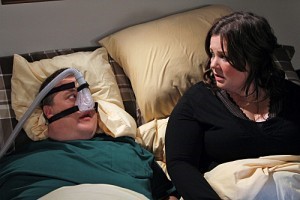 Once we have collected all this data it is time to talk about treatment. Up until recent years the only thing on the market to help individuals who have Sleep Apnea was with a device called a CPAP (Continuous Positive Airway Pressure) Device which is a mask that you plug into the wall that forces air down your airway. For me that does not seem like a good option as I enjoy camping and would not be able to take it with me to the mountains. Research has found that only about half of the people who try the CPAP will stick with the treatment. Luckily things have changed with the introduction of the MicrO2.
Once we have collected all this data it is time to talk about treatment. Up until recent years the only thing on the market to help individuals who have Sleep Apnea was with a device called a CPAP (Continuous Positive Airway Pressure) Device which is a mask that you plug into the wall that forces air down your airway. For me that does not seem like a good option as I enjoy camping and would not be able to take it with me to the mountains. Research has found that only about half of the people who try the CPAP will stick with the treatment. Luckily things have changed with the introduction of the MicrO2.
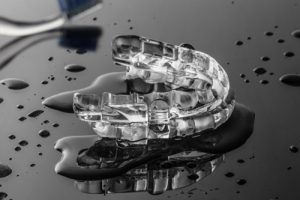 The MicrO2 is an oral appliance, also called a mandibular advancement splint. Meaning that it moves your lower jaw forward while you sleep to expand the space behind your tongue. This movement allows the air to flow easily into the lungs as you sleep by opening up the airway slightly. The best part, It’s not clunky or uncomfortable! The device is a small retainer like appliance that offers plenty of space for your tongue to move around while you sleep, It also has two separate pieces which allows you to open and close your mouth so you don’t feel restricted at all.
The MicrO2 is an oral appliance, also called a mandibular advancement splint. Meaning that it moves your lower jaw forward while you sleep to expand the space behind your tongue. This movement allows the air to flow easily into the lungs as you sleep by opening up the airway slightly. The best part, It’s not clunky or uncomfortable! The device is a small retainer like appliance that offers plenty of space for your tongue to move around while you sleep, It also has two separate pieces which allows you to open and close your mouth so you don’t feel restricted at all.

McCreight Progressive Dentistry Client CBCT- Left is without the MicrO2 device// Right is with the MicO2 device in.
If you have Sleep Apnea you are not just drowsy, you could be risking your job, your marriage, and even your life! If you notice that you are having troubles staying awake it may be a good idea to come in a get checked out sooner rather than later. We want to help save your life but it is up to you to pick up the phone to call us at (970) 879-4703. We offer comprehensive consults where you can sit down one on one with Dr. Jim McCreight to ask any questions that you may have concerning yourself or even a loved one sleeping habits.
Dr. Wendy and Dr. Jim McCreight along with their experienced Team at McCreight Progressive Dentistry offer exceptional dental care for all ages at our convenient Steamboat Springs, Colorado office. Looking for a dentist in the Western Slope area? Please call us and schedule an initial hygiene appointment (970) 879-4703.
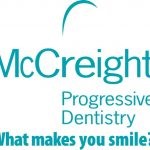
For other oral tips visit our website
Make sure to Follow and Like us on Facebook for all the latest updates.
By: Anna Nierenberg, Client Relations at McCreight Progressive Dentistry.

